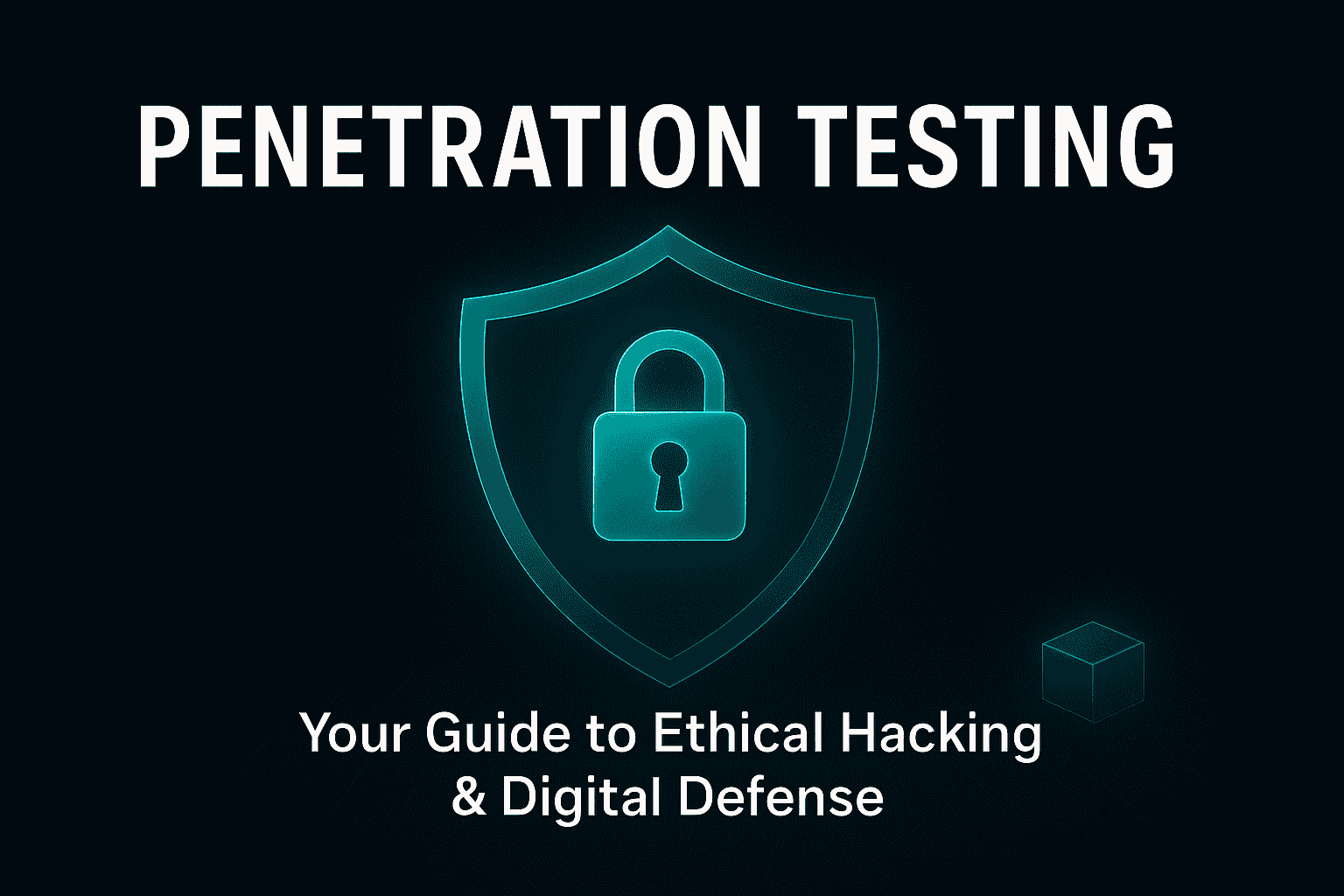Hacking with a Purpose 🚀
In the ever-evolving digital landscape, the terms “hacking” and “cybersecurity” often conjure images of shadowy figures and complex code. But what if we told you there’s a side of hacking that’s not just legal, but absolutely essential for protecting our digital world? Welcome to the realm of penetration testing, often called “ethical hacking.”
This blog post will demystify penetration testing, breaking down the different types of assessments and explaining the crucial “box” terminologies that define a tester’s perspective. Understanding these distinctions is vital for anyone looking to bolster their digital defenses, as it helps clarify the varied nature of cyber threats and how security professionals proactively combat them.
The Critical Role of Legal & Ethical Considerations ⚖️
Before diving into the specifics of how penetration testing is done, it’s paramount to understand the legal and ethical backbone that distinguishes it from malicious hacking. Ethical hacking is, by definition, authorized hacking. Without explicit permission, any attempt to access or test a system is illegal and can lead to severe consequences.
To ensure a penetration test is conducted legally and effectively, several key steps and documents are crucial:
- ✍️ Formal Agreement: Every engagement begins with a formal agreement, often called a Statement of Work (SOW) or Rules of Engagement (RoE). These documents are non-negotiable. They meticulously define the scope of the test (what systems are in scope and what are not), the boundaries (e.g., specific IP addresses, times of testing), the communication protocols (who to contact if an issue is found), and the acceptable testing methodologies. This protects both the client and the penetration testing team.
- 🔒 Data Handling & Confidentiality: Testers often encounter sensitive data. The SOW will detail how such data is handled, secured, and if it needs to be reported or deleted after the test. Confidentiality agreements are always in place.
- 🌍 Adherence to Laws: Penetration testers must operate within local and international laws, including data privacy regulations like GDPR, CCPA, or the Data Privacy Act of 2012 here in the Philippines. This ensures the test is compliant and respects individual and organizational rights.
This rigorous framework ensures that penetration testing is a controlled, professional, and value-driven exercise aimed solely at improving security, not causing harm.
Why Penetration Testing is Indispensable 🛡️
In today’s interconnected world, a breach isn’t a matter of “if,” but “when.” This stark reality makes proactive security measures like penetration testing not just beneficial, but absolutely indispensable. Here’s why organizations worldwide invest in it:
- Proactive Defense: Unlike reacting to a breach after it happens, penetration testing helps identify and remediate vulnerabilities before malicious attackers can exploit them. It’s about finding the holes in your armor before you’re attacked.
- Compliance & Regulations: Many industry regulations and standards, such as PCI DSS (for credit card data), HIPAA (for healthcare), and ISO 27001, mandate regular penetration testing. It’s often a legal requirement to demonstrate due diligence in cybersecurity.
- Realistic Risk Assessment: It moves beyond theoretical vulnerabilities. By attempting to exploit weaknesses, penetration tests demonstrate the actual impact and risk of a successful attack, giving organizations a clear picture of their true security posture.
- Validate Security Investments: Have you invested heavily in firewalls, intrusion detection systems, or security awareness training? A penetration test can validate if these controls are actually effective in practice against determined adversaries.
- Informed Decision-Making: The findings from a pen test provide actionable intelligence, helping organizations prioritize security investments, justify budget allocation for necessary upgrades, and develop more robust security strategies.
- Building Trust & Confidence: Regularly undergoing independent security assessments demonstrates a strong commitment to protecting data and systems, building confidence with customers, partners, and stakeholders.
The Phases of Ethical Hacking 🗺️
Before we dive into the different types of penetration tests, it’s crucial to understand the systematic approach ethical hackers take during an engagement. Knowing these steps provides context for how various penetration tests are conducted, from initial planning to final reporting.
For a detailed breakdown of each stage—including Reconnaissance, Scanning and Enumeration, Gaining Access, Maintaining Access and Covering Tracks. —we invite you to revisit our previous blog post: Hacking for Good: Unpacking the Five Stages of Ethical Hacking
Types of Penetration Testing 🧪
Penetration testing isn’t a one-size-fits-all solution. Different systems require different approaches. Here are the standard categories of penetration testing you’ll encounter:
- 💻 Infrastructure Penetration Testing (Network & System Infra):
- Focus: This targets the foundational elements of an organization’s IT environment, including network devices (routers, switches, firewalls), servers (Windows, Linux), workstations, and network services (DNS, Active Directory).
- Goal: To uncover vulnerabilities that could allow unauthorized access, privilege escalation, or disruption of services, both from an external (internet-facing) and internal (simulating an insider threat or compromised internal system) perspective.
- 🌐 Web Application Penetration Testing:
- Focus: Specifically targets the security of web-based applications, including their underlying code, databases, APIs, and associated components, whether hosted on-premise or in the cloud.
- Goal: To identify common web vulnerabilities like SQL Injection, Cross-Site Scripting (XSS), broken authentication, and insecure configurations, often guided by standards like the OWASP Top 10.
- 📶 Wireless (Wi-Fi) Penetration Testing:
- Focus: Assesses the security of enterprise Wi-Fi networks.
- Goal: To find weaknesses in wireless protocols (e.g., WPA2/3 configurations), identify rogue access points, and determine if an attacker can gain unauthorized access to the internal network via the wireless infrastructure.
- 📱 Mobile Application Penetration Testing:
- Focus: Targets vulnerabilities within mobile applications (iOS and Android) and their backend APIs.
- Goal: To examine data storage, authentication mechanisms, insecure communication, and client-side vulnerabilities unique to mobile platforms.
- 🔌 API Penetration Testing:
- Focus: Specifically assesses the security of Application Programming Interfaces (APIs), which are critical for data exchange between applications.
- Goal: To uncover vulnerabilities such as broken authentication, injection flaws, excessive data exposure, and improper access control within API endpoints.
- ☁️ Cloud Penetration Testing:
- Focus: Targets security misconfigurations, services, and access controls within cloud environments (IaaS, PaaS, SaaS).
- Goal: To ensure cloud resources are securely configured and managed, adhering to the cloud provider’s shared responsibility model.
- 🧑🤝🧑 Social Engineering Penetration Testing:
- Focus: Exploiting the “human element” of security.
- Goal: To determine if individuals can be manipulated (e.g., via phishing, vishing, pretexting) into divulging sensitive information or performing actions that compromise security.
- 🚶 Physical Penetration Testing:
- Focus: Attempting to gain unauthorized physical access to secure locations like offices, data centers, or server rooms.
- Goal: To identify weaknesses in physical security controls (locks, alarms, cameras, access cards) that could lead to unauthorized access to IT systems or sensitive assets.
- 💡 IoT (Internet of Things) Penetration Testing:
- Focus: Assessing the security of connected “smart” devices and their ecosystems, including hardware, firmware, software, and communication protocols.
- Goal: To uncover vulnerabilities in increasingly common IoT devices found in homes, businesses, and industrial settings.
“Box” Terminologies: Understanding the Tester’s Perspective 📦
Beyond the type of system being tested, penetration tests are also classified by the level of information and access the tester has about the target environment. This is where the “box” terminologies come into play, influencing the testing approach and the findings.
- ⬛ Black Box Penetration Testing:
- Concept: The tester has zero prior knowledge of the target system’s internal structure, network diagrams, source code, or credentials. They operate like a real-world external attacker, relying solely on publicly available information and reconnaissance to discover vulnerabilities.
- Analogy: Imagine trying to pick a lock on a safe you’ve never seen before, with no information about its internal mechanisms.
- Best For: Simulating external attackers and assessing perimeter security from an outsider’s perspective. It highlights vulnerabilities discoverable with minimal prior information.
- ⬜ White Box Penetration Testing:
- Concept: The tester has full and complete knowledge of the target, including network architecture diagrams, source code, system configurations, and even administrative credentials. This allows for an extremely thorough and deep-dive assessment.
- Analogy: You have the blueprints, schematics, and even the combination to the safe. You can examine every component and every hidden flaw.
- Best For: Comprehensive security audits, code reviews, and identifying logical flaws or deep-seated vulnerabilities that require extensive internal knowledge. It’s highly efficient for finding maximum vulnerabilities.
- 🔲 Gray Box Penetration Testing:
- Concept: The tester has partial knowledge or limited access to the target system. This might include some documentation, network diagrams, or a standard user account. It simulates an attacker who has gained some initial foothold (e.g., through social engineering or a compromised low-privilege account) or an insider with limited access.
- Analogy: You have a partial diagram of the safe’s mechanisms and perhaps a guess at some numbers for the combination, but not the complete solution.
- Best For: Simulating insider threats, or an attacker who has already breached the external perimeter. It balances the realism of a black-box test with the efficiency and depth of a white-box assessment.
Penetration Testing vs. Vulnerability Scanning: A Crucial Distinction 🔍
It’s common to confuse vulnerability scanning with penetration testing, but they are fundamentally different, though complementary, activities.
- Vulnerability Scanning: Think of this as an automated health check or an X-ray. A vulnerability scanner uses automated tools to scan systems, networks, or applications for known vulnerabilities. It provides a list of potential weaknesses, often without attempting to exploit them. It’s like finding a list of locked doors in a house.
- Penetration Testing: This is the surgeon performing an operation based on the X-ray findings. A penetration test goes beyond merely identifying potential weaknesses. It involves security experts using both automated tools and manual techniques to actively exploit identified vulnerabilities to demonstrate whether they can be leveraged to gain unauthorized access, exfiltrate data, or disrupt operations. It’s about finding the locked door, then picking the lock to see what’s behind it and what damage could be done.
In essence, vulnerability scanning tells you where you might have a problem, while penetration testing tells you if that problem can be exploited and what the real-world impact would be. Scanning is often a prerequisite for a pen test, providing a baseline of known issues to investigate further.
Final Thoughts 🔐
Understanding the diverse landscape of penetration testing—from the types of systems tested to the “box” models defining the tester’s knowledge—is crucial for any organization serious about its cybersecurity posture. It’s about moving from a reactive stance to a proactive one, identifying weaknesses before malicious actors do.
The right type of penetration test, executed with strict legal and ethical guidelines, provides invaluable insights, helps achieve compliance, and ultimately strengthens your defenses. It’s not just about finding flaws; it’s about building resilience and confidence in your digital operations.
Are you confident in your organization’s digital defenses? Which type of penetration testing do you think would be most beneficial for your current security posture?




